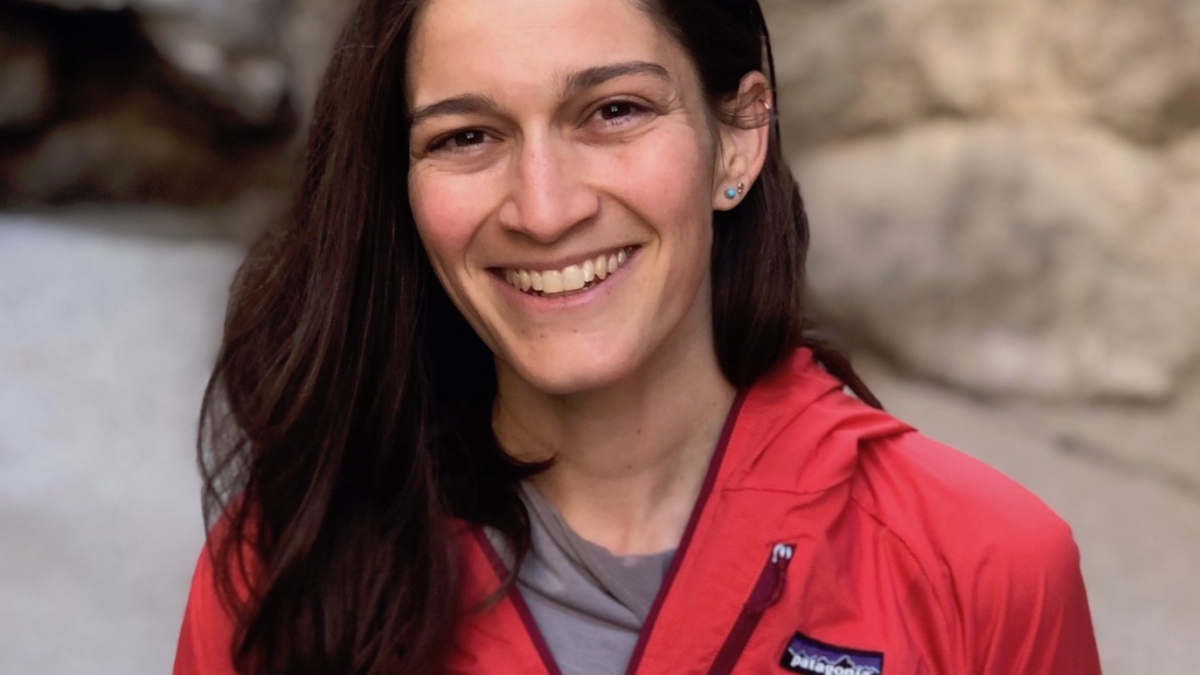Strengthening the impact of women in STEMM to build a more sustainable future

Noa Bruhis
Women are underrepresented in science, technology, engineering, mathematics or medicine (STEMM) fields, especially in leadership roles. According to a recent report from the National Center for Science and Engineering Statistics, there are more than twice as many men with college degrees working in science and engineering fields than women. And the women who do find themselves working in these industries may face sexism in the workplace.
It’s something that Noa Bruhis experienced firsthand while working as an engineer.
“I was feeling pretty alone as a female engineer and dealing with blatant sexism,” Bruhis said. “I designed an environmental sensor, entered it into an international challenge and made it as a finalist. But when I had a problem with my sensor and needed more help, my company disbanded what was left of my team and cut my budget. Some of the feedback I got from one of the senior leadership was that if my project wasn’t happening and I needed something to do, the lab could use some cleaning, and I was welcome to grab a broom.”
It was then she decided to leave her job and come to Arizona State University to earn a PhD in Human and Social Dimensions of Science and Technology at the School for the Future of Innovation in Society in the College of Global Futures.
“I picked a program that would put me out of my comfort zone and throw me into a different style of thinking," Bruhis said. "I was in courses and conversations that I had never been in before and never thought about before, and some of them attacked my old ways of thinking, which is healthy. I was drawn to the program and the people in it because it was so different from what I knew, and I would have the opportunity to grow.”
In the program, Bruhis learned about Homeward Bound, a global leadership initiative for women in STEMM. The program brings together a diverse cohort of women from around the world who are working to build a healthier and more sustainable future. It provides personal development and leadership tools, coaching, and networking opportunities through online content and collaborative learning. The 12-month program culminates with an expedition to Antarctica. As part of the sixth cohort of Homeward Bound, Bruhis will share her experiences and expertise while finding support and guidance as a woman in STEMM.
“One of the slogans of the program is ‘Mother Nature needs her daughters.’ Of course Mother Nature needs all her children, but many of her sons are already in place," Bruhis said. "People who aren’t (cisgender) male will have extra hurdles in STEMM. With this program, we’re able to validate those experiences and acknowledge that the challenges we face are different than those of our male counterparts. So let’s figure out what to do about it and make some moves.”
The program emphasizes a model of leadership, hard work and perseverance, something Bruhis has demonstrated throughout her life. She is a first-generation American and a whitewater rafting guide, and she rebuilt a car in high school. During her time at ASU, she has studied natural resource extraction and co-produced a documentary about helium extraction in northeastern Arizona. Her current research focuses on participatory filmmaking and finding ways for people with different ideologies to have more meaningful and equitable conversations with each other. She is also a Knowledge Mobilization Award winner for her work to engage with communities. With her unique and diverse science background, Bruhis hopes to bring a different perspective to the Homeward Bound program.
“I’ve found my ability to ask questions that others may not have been trained to ask is unique. As engineers, we’re often trained to ask, 'How can we solve this problem?' not 'Should we?' or 'Who gets a voice in that decision?' I’m excited to help bridge that gap.”
More Science and technology
Largest genetic chimpanzee study unveils how they’ve adapted to multiple habitats and disease
Chimpanzees are humans' closest living relatives, sharing about 98% of our DNA. Because of this, scientists can learn more about…

Beyond the 'Dragon Arc': Unveiling a treasure trove of hidden stars
NASA's James Webb Space Telescope (JWST) has set a new milestone: capturing images of over 40 individual stars in a galaxy so…

ASU selected as home and partner for CHIPS and Science Act-funded national facility for semiconductor advanced packaging
Following a week where a spirited effort by the Sun Devil football team captured the nation’s attention in the Peach Bowl, it is…